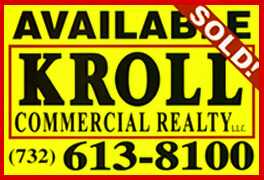
What Are The Different Types of Commercial Leases?
If you are opening a business or an office and considering leasing space, there are many different types of leases you could be asked to sign. Your monthly payments can be determined in more than one manner, so understanding the type of lease you are being asked to sign is crucial. Just because the property is offered at a set price per square foot doesn’t mean that is the final price. Taking the time to understand the different kinds of leases offered ensures that the final cost you pay is what you expected going into the deal and could determine your ultimate success or failure.
There are three basic types of commercial leases: net leases, gross leases and percentage leases. The first two spell out who pays for common expenses over the base rent such as building and grounds maintenance, taxes and insurance. The third type allows the landlord to collect additional rents based on a percentage of your businesses sales. Each has their advantages and disadvantages to both the Landlord and Tenant depending on the situation in which they are used. Before we define each type of lease more closely, there are some basic terms that should be understood.
- Base rent – this is the minimum amount you will have to pay each month. It may be expressed as a flat amount or a dollar amount per square foot (PSF).
- Common Area – if the property you are leasing is part of a larger property with other tenants, then this is the area that all tenants share in common. It could be a lobby, hallway, restroom, elevator, or stairway. Just how much of this space is allocated to you is usually related to the SF of the space you occupy divided by the total space all tenants are occupying. These charges are referred to as CAM, or Common Area Maintenance charges. Caution: not all landlords will add this area to the basic SF of your space. If added it obviously affects your base rent.
- NNN fees – these are Landlord passed-through operating expenses in addition to base rent for things such as property taxes, property insurance and CAM.
- Rentable square footage – this is the usable square footage of the space you are leasing plus your percentage share, in SF, of common area. For example, if the total SF of your unit is 1,000 SF and the total SF of all units is 10,000 SF, then your percentage share of common area would be 1,000 SF divided by 10,000 SF, or 10%.
With these basic definitions in mind, now we can further define the three basic types of commercial leases.
Net Lease – The Net Lease comes in three forms – triple net, double net and single net.
- Triple net – this means you share in three additional costs above your base rent. Taxes (real estate), insurance and maintenance. These costs incurred by the Landlord to operate the entire property are added together and assigned as an additional cost PSF to you depending on the percentage of overall SF you occupy and/or share in common area.
- Double net lease – typically means the two additional costs are added on to your base rent – taxes and insurance costs incurred by the landlord.
- Single net lease – some Landlord costs will be shifted to the tenant but just how much will usually be negotiated.
Gross Lease – The Gross Lease means the Landlord pays for all property expenses that would be encountered in a net lease.
On its face this seems like it would be the best deal for the tenant, but the expenses of operating the entire property are most likely being “loaded” into the base rent price PSF of a gross lease. This means that the base rent of a gross lease should exceed the base rent under a net lease because the operating costs have already been added into rent.
Things to look for when negotiating a net or gross lease:
- How often are the Landlord’s expenses calculated and allocated to each tenant?
- How are vacancies treated? This should be the Landlord’s responsibility to pick up CAM charges for space that is not being occupied.
- Is the Tenant being given an opportunity to audit the Landlord’s expenses to verify what is being transferred to the Tenant? This is not common practice, but could be negotiable.
- In a net lease, is each “net” expense clearly defined in the contract? Remember, the three net expenses of a net lease are real estate taxes, insurance and maintenance fees. But which expenses are included in any net lease must be clearly spelled out in the leasing contract to avoid disputes.
Percentage Lease – The Percentage Lease means the tenant is paying a base rent plus some percentage of monthly sales exceeding a threshold.
This type of lease is typically found in retail businesses in malls or strip centers. They may be used with seasonal businesses whose sales can be unpredictable. The Tenant will pay a guaranteed base rent plus an additional amount, usually expressed as a percentage of sales over an established threshold. If the business has a good month they pay their base rent and an additional payment of the percentage of sales exceeding the threshold. In months where sales do not exceed that threshold, just the basic rent is due. Under this arrangement, base rents PSF are typically lower than other leases because the Landlord hopes to share in sales that exceed the thresholds.
Keep in mind that utility costs are usually the responsibility of the individual tenants for their own spaces, but some utility costs for the overall property may be passed through by the Landlord. This may include electric, water and sewer fees. When negotiating a lease, make sure you understand what you are signing. Mistakes can be costly. If you need more help explaining the concepts above, make sure to discuss it with your agent so they can advise you on the options.
